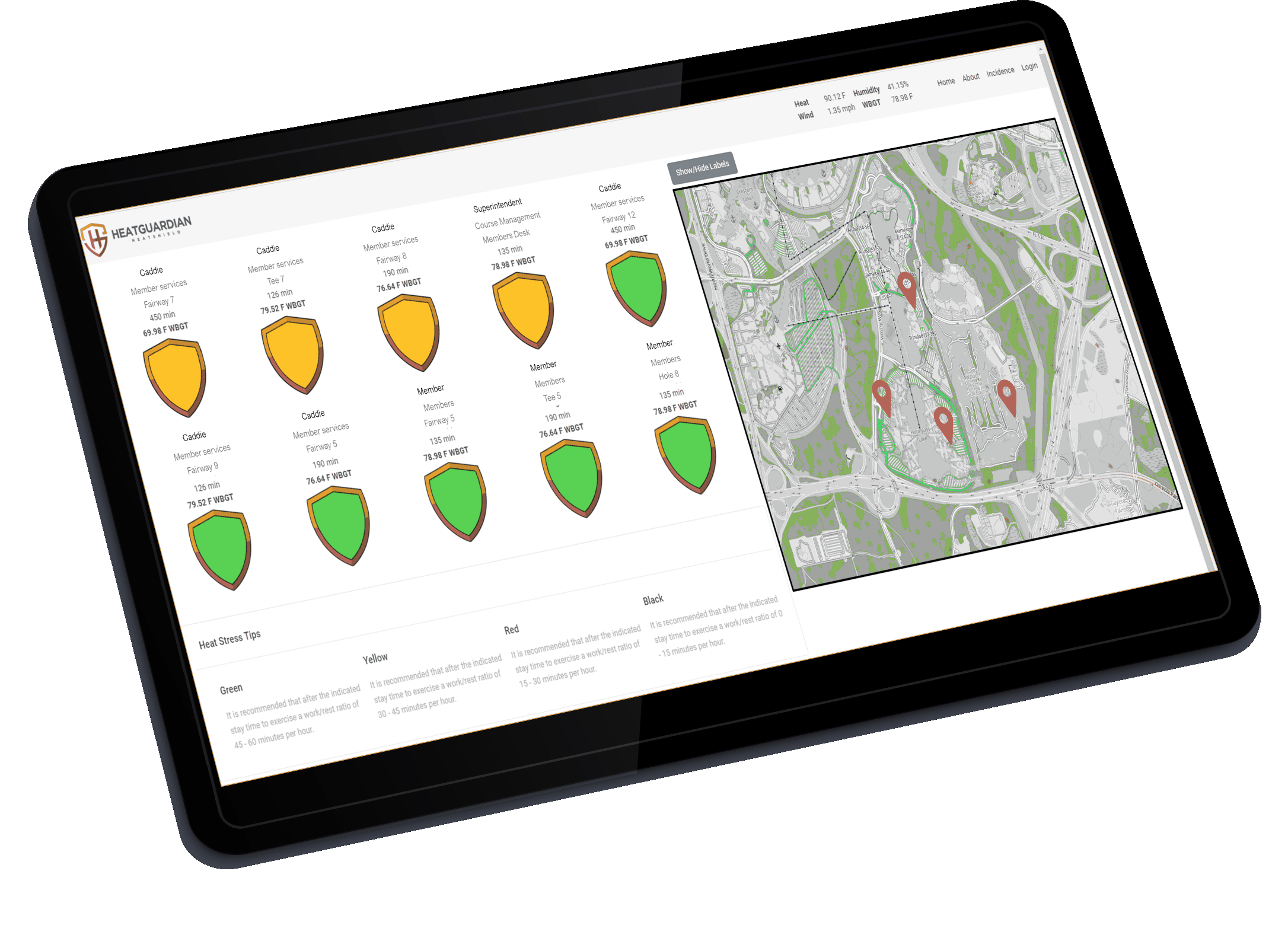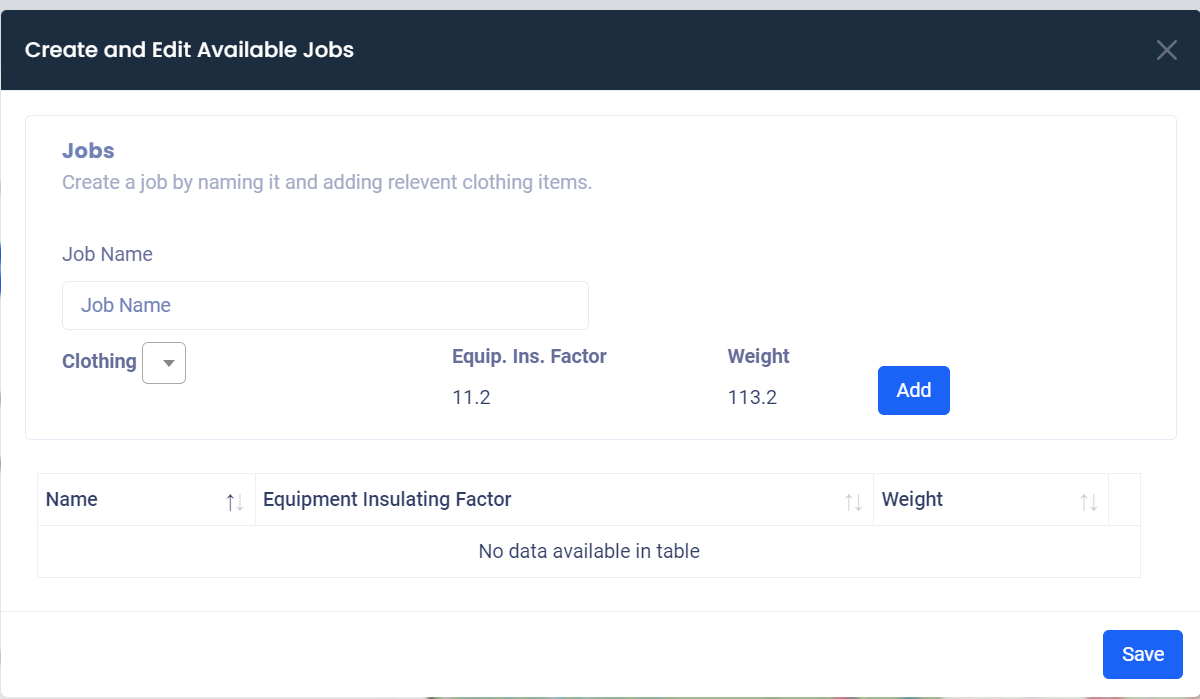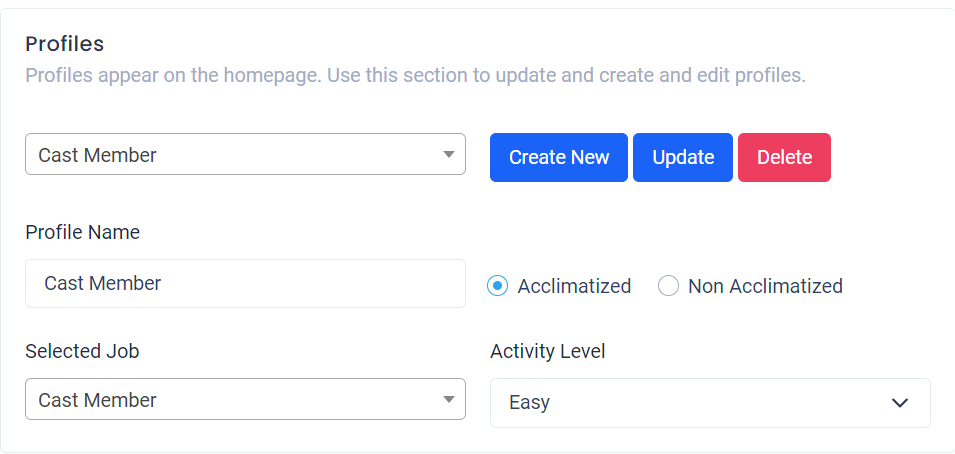One single dashboard to monitor occupational heat stress
Extreme summer heat is increasing globally with climate projections indicating that extreme heat events will be more frequent and intense in coming decades.
Heat-related illness and death risks can be diminished through better forecasting with proactive heat-health early warning systems.
HeatGuardian provides a dashboard to monitor in real time how your workers, clients or anyone on your premises are being affected by extreme heat based on their predefined individual profiles.

For organizations of any size
Unique profiles
Set up your own profiles based on your company standards. Each profile is defined as the specification of location, role, level of work (light, moderate, hard, very hard) and type of clothing.
Real-time localized weather data
The accuracy of the system is driven by on-site micro weather sensors that collect and integrate real-time localized environmental factors, including temperature, solar radiance, wind speed, lightning, and Wet Bulb Globe Temperature, and more. This can be assessed form ground level vs. rooftop via climate sensors.
Proactively monitor and keep people safe
Stay time indicates how long an individual under a profile is able to continuously maintain exposure before having to begin work/rest routines.
Enhanced Security
All data is securely stored in the HeatGuardian Edge server and is not uploaded to the cloud. You can however export your data and create your own reports and data analytics.
Heat stress incident reports
Supervisors can submit incident reports related to heat stress, specifying key information such as : Location of Incident, Nature of Call, Location of Treatment, Type of Response, Outcome and Asset Mapping.
All data will be securely stored in the HeatGuardian Edge server and available for data analytics at any time.
Acclimatized Profiles
“Acclimatization” means temporary adaptation of the body to work in the heat that occurs gradually when a person is exposed to it. Acclimatization peaks in most people within four to fourteen days of regular work for at least two hours per day in the heat. HeatGuardian factors in this important data when calculating the effect of the heat stress on a specifc profile.

Equipment insulating factor
Clothing insulation may be expressed in clo units. The clo has the same dimensions as the R value (square metre kelvins per watt or m2⋅K/W) used to describe insulation used in residential and commercial construction—thus, the higher the value, the better the insulation performance. HeatGuardian takes in account this to calculate the the thermal insulation factor for each piece of clothing or protective equipment used by your workers. This will have a huge impact on the way heat stress has an impact on the job profiles.



